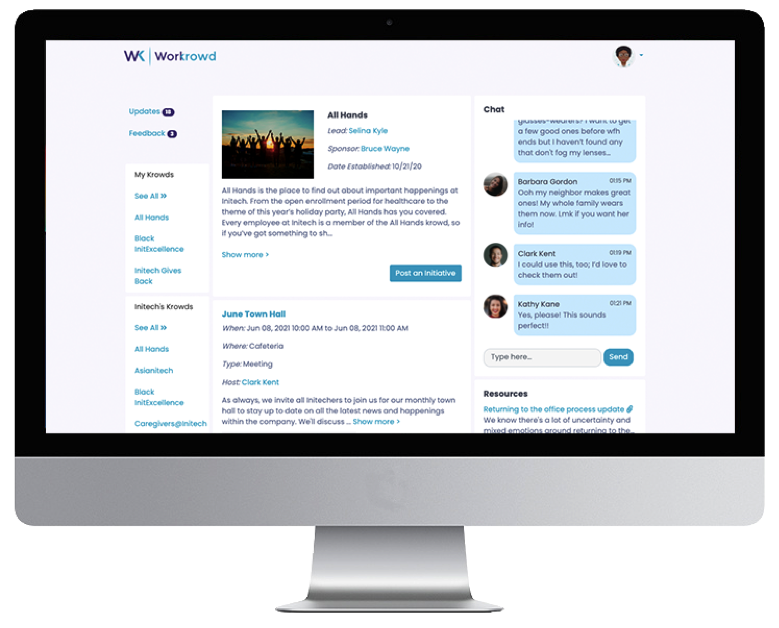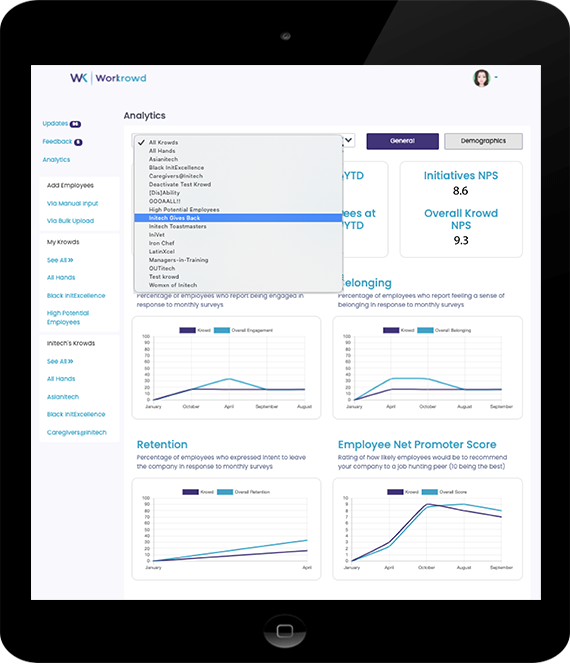We all like to feel we’re a part of something. Employee clubs are a great way to build this experience of belonging for every team member at your organization.
Community is incredibly powerful. Studies have proven human connection is one of the key ingredients to a longer, happier life. On the flip side, loneliness can shorten one’s lifespan and exacerbate chronic illnesses.
There’s no reason why someone’s job can’t give them a sense of belonging or contribute to their sense of community. This sadly isn’t always the case, though.
Many businesses don’t feel the need to set up or encourage any sort of employee clubs or groups. They also don’t encourage employee socialization or connection.
This may be because of financial reasons, not understanding the benefits, or not feeling it contributes enough to the bottom line to be worth the extra effort.
But employee clubs can be an easy way to encourage colleagues to connect with one another, leading to many benefits.
Here are some of the reasons why employee clubs should be one of HR’s favorite tools:
Improved retention
When someone feels like they belong at work, they’re more likely to stay long-term.
Employee clubs are a great way for people to connect with colleagues who share their interests or backgrounds and whom they may not have met otherwise, especially in a larger organization.
The slower your employee turnover, the more money you’ll save on the often lengthy and expensive hiring process. That gives you more money to spend on other areas of HR and the rest of the business.
Better employee mental health
Community and belonging play huge roles in someone’s mental health. This is true both in terms of helping them if they’re feeling isolated, lonely, or anxious, and when it comes to protecting their mental wellbeing.
An employee may not always feel like they can talk to their teammates, or their teammates may not understand their situation. If there are employee clubs where people can share experiences, it can connect them with someone who gets what they’re going through and can listen and offer advice if desired.
Fewer sick days
As I mentioned in the introduction, community is good for both our physical and mental health.
Community can be a motivational tool which encourages us to get up and moving. This prevents our joints from seizing up and causing issues like back pain. Back pain is actually one of the biggest reasons for sick leave in the US.
As physical and emotional pain are processed in the same part of the brain, the amygdala, the suppression of emotions can lead to chronic pain conditions such as fibromyalgia or migraines. This is also why one of the symptoms of depression is random aches and pains.
When someone has people who understand them and are willing to listen, they’re less likely to bottle up their issues. As a result, it’s less likely to manifest in their body as chronic pain.
Develop the right mindset
Connecting with people to whom you relate, but who may be at a more advanced stage of their career, can really help someone to grow their mindset.
Mindsets are contagious. If you’re hanging around pessimists all the time, chances are you’re going to adopt a more negative outlook, too.
The same is true if you hang around people who are uplifting, optimistic, and hardworking.
If someone is a chronic complainer, connecting them to a mindfulness club, or someone who’s got a brighter outlook, could be all they need to see the world from a different angle.
Grow their skills
Every employee has a unique set of skills just waiting to be shared with other people within your business. Employee clubs allow them to show off their skills.
If someone is feeling bored in their role, employee clubs could help them develop new skills. These could then allow them to move into another department. That way you don’t lose their existing business knowledge. Plus, you won’t need to hire someone new, train them in the role, and teach them about your business, a process which can take several months at a minimum.
Better interdepartmental connections
Some departments traditionally have fractured or non-existent relationships, like accounting and marketing.
When employees connect with others who are outside of their department, it can lead to better interdepartmental connections and collaborations. It can abolish any previous tensions that may have existed between the two teams.
This benefits everything from problem solving to product launches, leading to better teamwork and a greater sense of community within your business as a whole, as well as in the individual employee clubs.
More attractive to candidates
While money is always a big factor when someone is job hunting, it’s no longer the biggest one. Senses of purpose and belonging matter just as much, if not more.
Sharing details of the employee clubs that exist can be a real selling point to people who are looking not just for a place to work, but for a place to create connections and develop their skills.
You could do this on social media, in the job description, or even in marketing emails.
It helps if any social media content is shared by employees from their account, rather than from a branded page. Employees have a much larger reach and are seen as more trustworthy than what is often a faceless brand.
Greater productivity
Who doesn’t love productive employees?
When someone feels a greater sense of belonging, they’re happier in their role, and they’re therefore more productive, too.
This reflects well on all areas of the business, and of course, generates more income.
You can therefore grow faster thanks to the additional revenue from having more productive employees and a lower churn rate.
Conclusion
Employee clubs can benefit every area of a business, from attraction to retention to employee productivity and experience. Setting them up and keeping them running doesn’t have to be a complicated process, either.
Workrowd’s lightweight platform makes it easy to market, manage, and measure all your employee clubs. From professional development to social impact, and from recreation to diversity and inclusion, our suite of tools empowers you to meet a wide range of employee needs.
If you’re curious to learn more and see if Workrowd is a fit for your organization, send a note to hello@workrowd.com. We’d love to learn more about your goals and discuss ways to increase engagement, retention, and belonging with employee clubs.

















